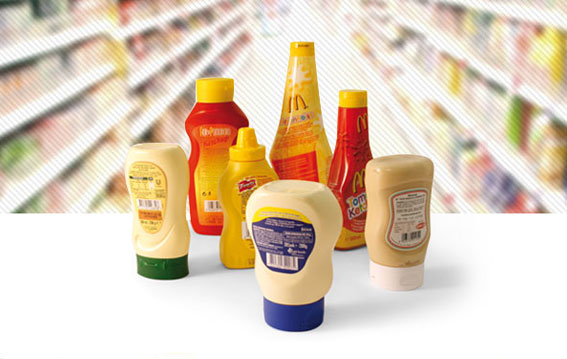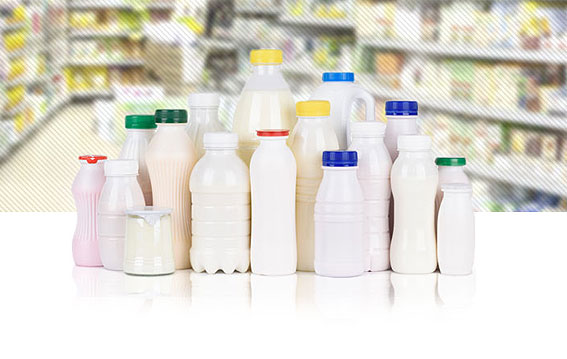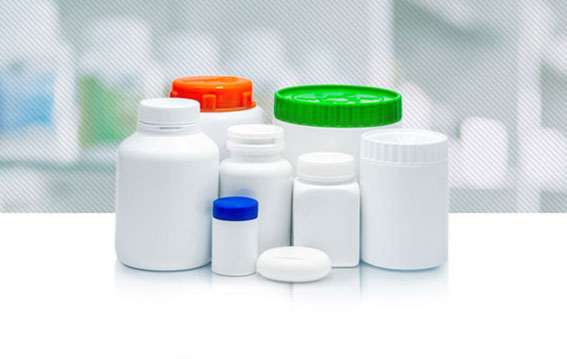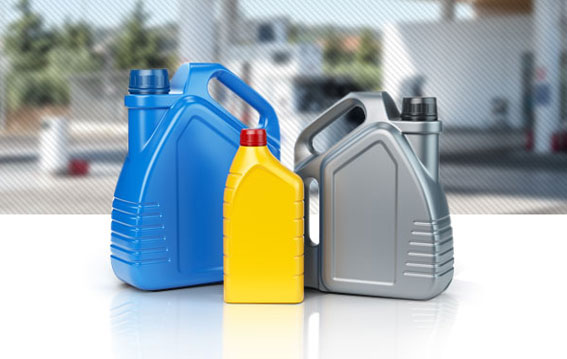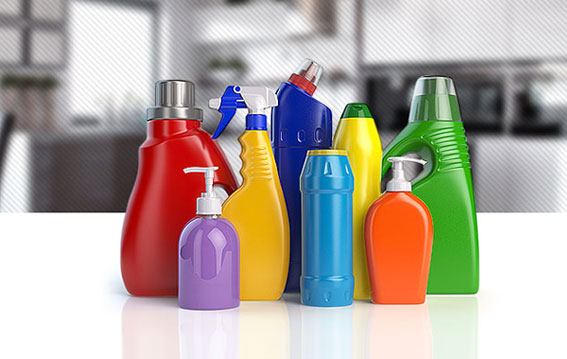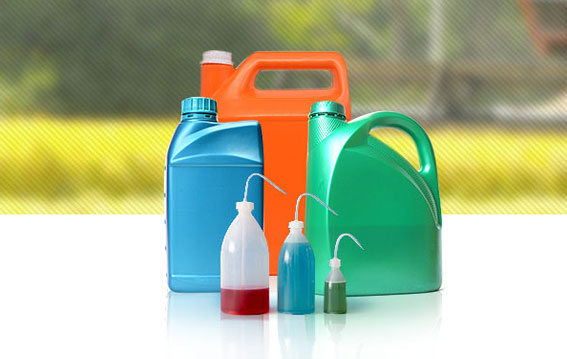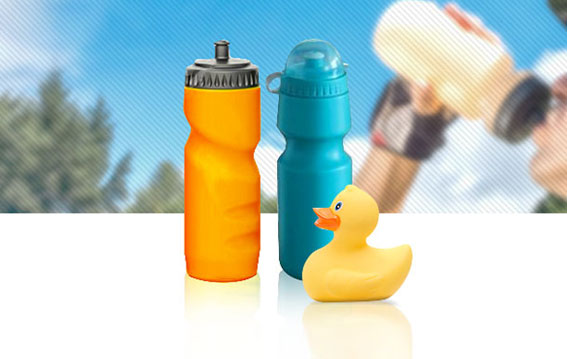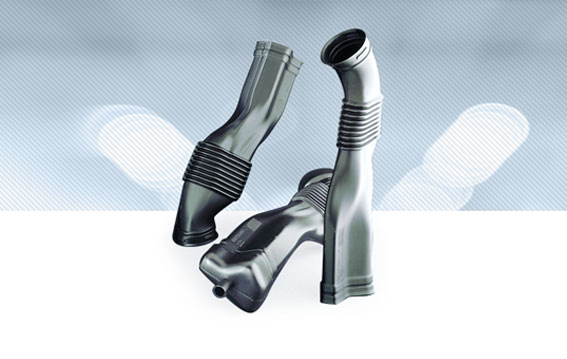Coextrusion technology for multi-layer bottles
The blow-moulding co-extrusion process taps the specific characteristics of different thermoplastic materials combining them in a multi-layer structure. The results that can be achieved with coextrusion technology are: resistance to high temperature, to penetration of water vapour and oxygen, resistance to loss of carbon dioxide, to solvents, alcohol, food flavours and protection from ultraviolet rays. Polyolefins are effective against water vapour but have limited capacity to retain gases. For this reason, in order to create oxygen or carbon dioxide barrier, the materials to be used should have a low permeability coefficient like EVOH, PVDC, PAN, PA. The minimum thickness that can be obtained through the blowmoulding co-extrusion process is set between 20/30 microns. When choosing the materials to combine in a multi-layer structure, the adhesion characteristics of the different materials should be taken into account as any occurrence of flaking off, that is more likely to take place on welding or deflashing, would make the container unusable. Whereas the combination of similar materials such as LDPE and HDPE is normally easily manageable, barrier plastics do not generally adhere to polyolefins and require the interposition of an adhesive layer.
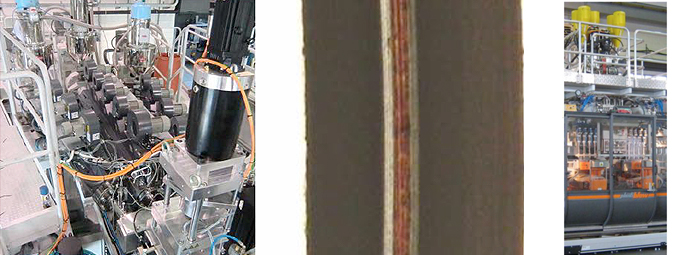
Plastiblow provides the most advanced technology for the production of multi-layer containers and proposes blow-moulding machines with single or double blowing unit and, depending on the production requirements, horizontal or vertical extruders and co-extrusion heads up to 12 outlets and up to 7 layers. The heads design must be optimised in order to obtain more constant thickness and consistent speed for each layer. The layers thickness can vary by varying the extruders output. The co-extrusion head is realized using numerically controlled machine tools capable of guaranteeing reduced and constant tolerances, and thus allowing a thorough monitoring of each layer both in terms of thickness and uniformity in the annular co-extrusion process. Plastiblow has gained remarkable experience as a result of a tight collaboration with its customers and with worldwide known suppliers.
From a functional point of view, three types of co-extrusion heads can be essentially identified:
- double layer co-extrusion heads for the realization of a decorative external layer;
- three-layer co-extrusion heads for the realization of an intermediate layer of recycled material;
- co-extrusion heads from 3 to 7 layers including barrier layer.
Depending on the final application, it is possible to identify specific multi-layer structures that meet the characteristics required for certain containers both in terms of aesthetics and correct preservation of content.
Cosmetics and personal care
The bottles used for cosmetics must have a bright surface, must be resistant to scratches and should be easily printable (screen printing process). Double layer co-extrusion is normally used in these cases. The layers thickness results from the optimisation of two opposite requirements. On the one hand, the intention is reducing the use of masterbatch which often implies high costs; on the other, it is necessary to ensure a good and uniform coating to obtain the same aesthetic result achieved when adopting single layer extrusion. The concentration of masterbatch necessary to ensure good coating increases with the decreasing of outer layer thickness and with the increasing of colour contrast between outer and mid layer. The outer layer is typically 20% of the total thickness. Another example of double layer structure is that of soft-touch bottles featured by a velvety touch feeling. This characteristic is obtained by using PP based materials and the velvety touch feeling changes depending on the outer layer thickness, that in this case may be below 10% of total thickness. For the cosmetic sector, Plastiblow has recently supplied a double-unit electrically operated blow-moulding machine with a 10-parison decorative co-extrusion head with 110 mm centre distance.
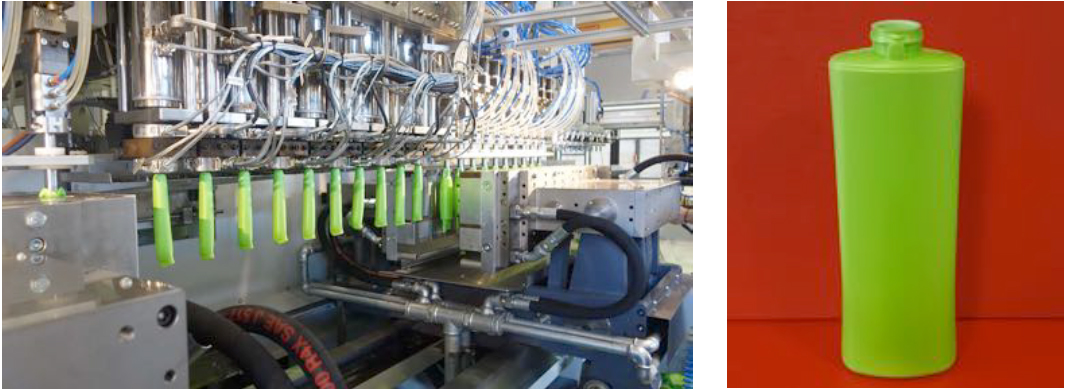
Agrochemical products
For chemicals containers (detergents, oils, solvents, fertilizers, weedkiller products, fungicides) polyamide (PA) is used as a barrier to improve resistance to aggressive substances or impermeability to solvents. Three-layer structures are normally used. In case of using scraps, the structure consists of 4 layers: inner barrier layer/ adhesive layer/ recycled material/ outer masterbatched virgin material. In this field, Plastiblow has realized various 4-layer co-extrusion blow-moulding.
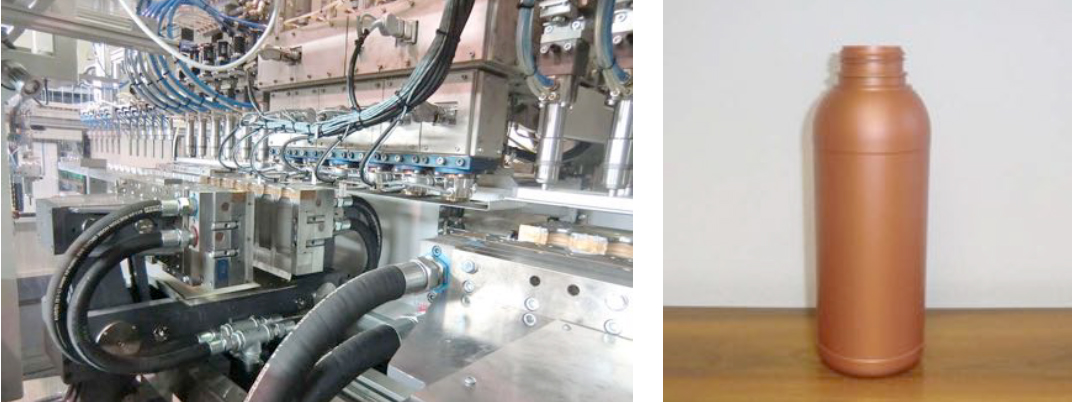
Food sector
For food products (sauces, fruit juices, ketchup, mustards, jellies, etc.) a barrier is required against gases, air or water vapour and to reduce the loss of aromatic compounds. The bottles realized by using co-extrusion technology ensure suitable content shelf-life, that is the preservation of organoleptic and sensory characteristics during a specific period of time: . Co-extruded bottles used for such applications have a 5-layer structure, and if a recycled material layer is included the structure is of 6 layers. The typical layer sequence is: inner HDPE / adhesive / barrier / adhesive / recycled / outer HDPE. The most widely used barrier material is EVOH and layer thickness depends on the type of product. If the only requirement is a UV barrier layer, as in the case of long-life milk bottles, 3-layer structures are used consisting of white/black/white HDPE, normally in a percentage of 30-40-30 or 40-40-20. The black layer provides an effective protection against sunlight which would deteriorate the organoleptic characteristics of milk and its derivatives.

Plastiblow's electrically operated blow-moulding machines are particularly suitable for the production of bottles in the food sector as the total absence of hydraulic systems avoids any contamination of the product and of the environment thus making the machine suitable for operation in sterile or controlled atmosphere environments, as is often required in food industry to prevent the formation of bacteriological colonies. Among the most interesting experiences in this field Plastiblow has realized an electrically operated blowmoulding machine with long-stroke double unit for the production of 6-layer sauce bottles with 125-mm centre distance 8-cavity moulds. The composition of layers from the outer to the inner is as follows: PP / recycled / adhesive / EVOH / adhesive / PP. Layers thickness vary from the 30 microns of the adhesive layer to the half millimetre of the recycled material layer. The blow-moulding machine is equipped with three horizontal extruders (for outer, inner and recycled layers) and three vertical extruders (for adhesive and barrier layers). Given the dimensions of the extruders and head, special attention was put in the supporting structure and in the head's bobbing movement.

Download pdf: coex-pb_en 2017.pdf
For more information: plastiblow@plastiblow.it

.jpg)
